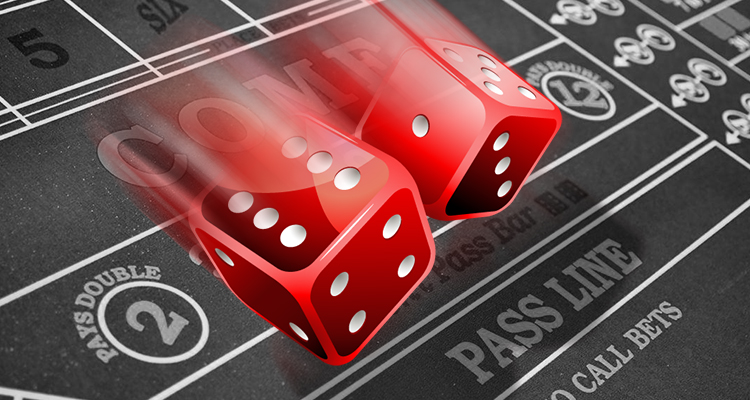Craps: Pre-Set the Dice

Larry Edell 09:03 Mar 15th, 2006 Craps
Imagine the two dice are rotating on a horizontal axis at the same time. If they stay straight and continue rotating, the numbers on the right and left sides of each die will never show. If you set, grip and throw them properly, you should only see the numbers that are on the vertical axis. There are only six different dice sets as follows:
The 2354 Set: Set both dice identically so when you rotate them toward you, all you see are the 2, 3, 5 and 4 on the vertical axis. The totals showing are all hard ways - the hard four, hard six, hard ten and hard eight. Called the “hard way set”, this is one of the most popular sets. If you look closely, you will see that the ones and sixes have been eliminated. In addition to fewer sevens, you would not be able to throw a two, three, eleven or twelve with this set. This set is terrific for hardways, place bets and 6s and 8s. Set this quickly by placing the ones and sixes on both horizontal axis.
The 1364 Set: Both dice are set on the vertical axis for 1, 3, 6 and 4. This method eliminates the 5's and 2's on the horizontal axis so it is impossible to roll a 3 or 11. It actually increases the frequency of sevens so it is used only for don’t bettors and the come out. You can set this quickly by placing the fives and twos on both horizontal axis.
The 1265 Set: Another don’t bettor set is the 1, 2, 6 and 5. You will have the fours and threes eliminated on the sides so these numbers will not roll. This set will produce more sevens but no fives or nines so if you see someone laying the fives and nines, he’s probably using this set. Set his quickly by placing the fours and threes on both horizontal axis.
The 1265/2354 Set: Both die can be set differently. For example, set the first die as 1, 2, 6, 5 and the second die as 2, 3, 5, 4. Although this may take a little longer to set, it has terrific advantages - only two sevens, and two each of the 4, 5, 6, 8, 9 and 10. This set would be excellent for place bettors after the come-out! Set this one by placing the four and three on one horizontal die axis and the one and six on the other.
The 1265/1364 Set: Additionally, you can set the first die to 1, 2, 6, 5 and the second to 2, 3, 5, 4. On the first die, you are eliminating the 4 & 3. On the second die, you are eliminating the 2 & 5. This combination gives you two of each of the 5, 6, 7 and 8. This is the famous “6-T” set, because if you place the two sixes together to form a “T” you master this set in one quick motion. This is set by placing the four and three on one horizontal die axis and the two and five on the other.
The 1364/2354 set Lastly, my favorite. Set the first die to 1, 3, 6, 4 and the second to 2, 3, 5, 4. This set will produce only two sevens, but three each of the six and eight. There are also no twos or twelves and one each of 3, 4, 10 and 11. Set this one by placing the five and two on one horizontal die axis and the one and six on the other. When pre-setting the dice, it doesn’t matter exactly where the numbers are located, as long as the proper ones are there. With my favorite described above, it is okay to set them 6, 4, 1, 3 on one and 4, 2, 3, 5 on the other. With this particular set, you will be eliminating the 5 & 2 on one die and the 6 & 1 on the other die. As long as these numbers remain on the axis, it doesn’t matter where the other numbers end up. The advantage of dice setting is that it doesn’t cost you anything but a little practice.
I say, “If you’re going to shoot anyway, why not set the dice?”
On This Page



